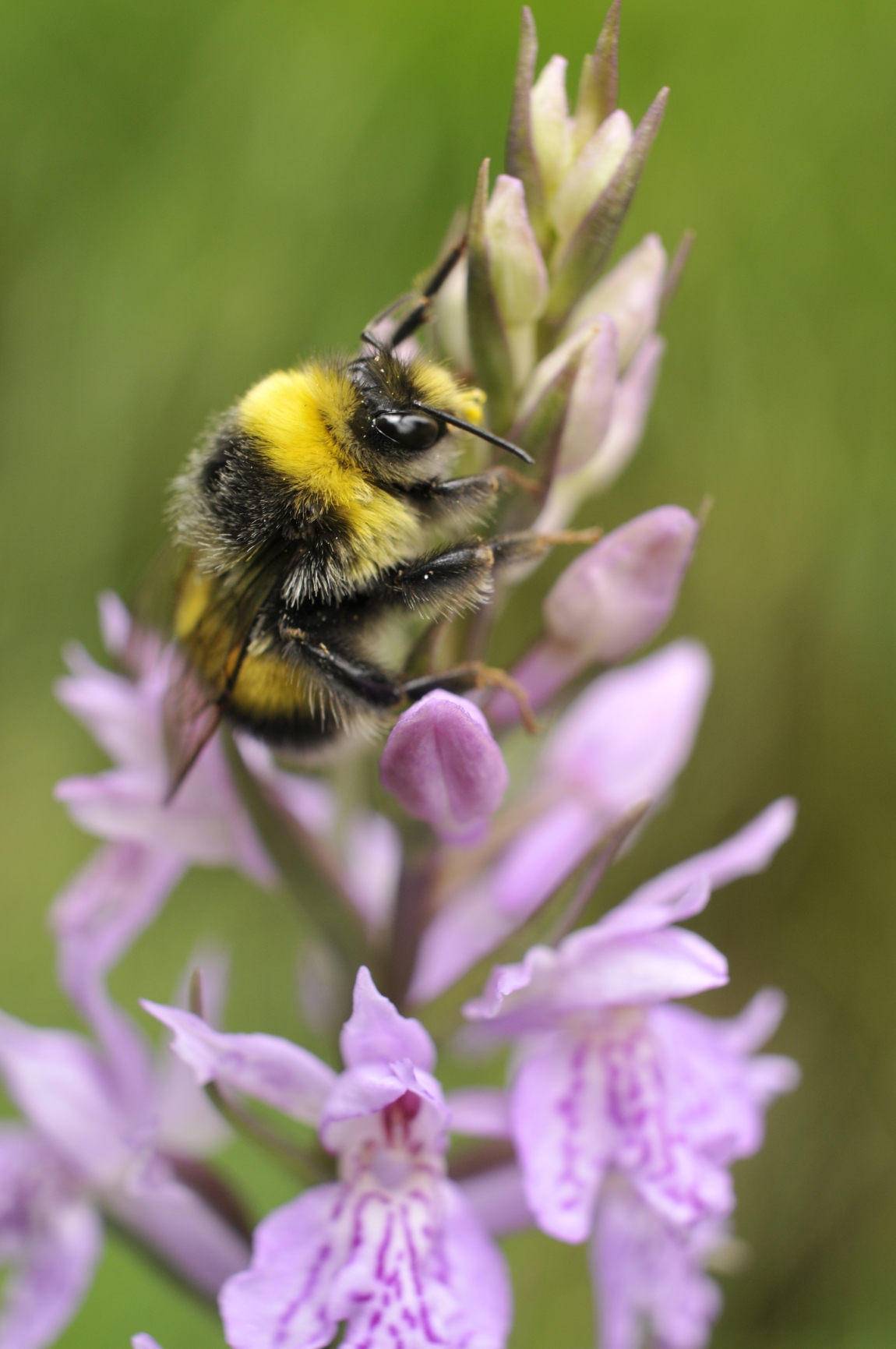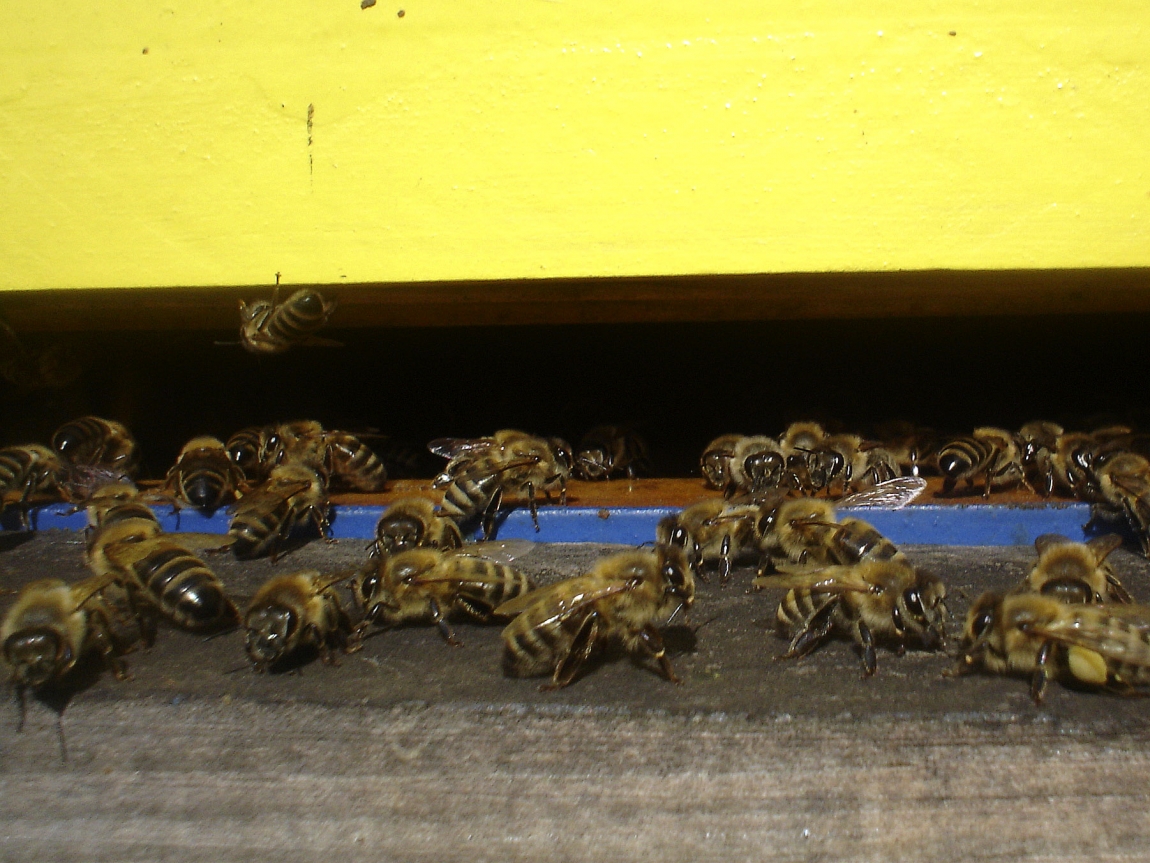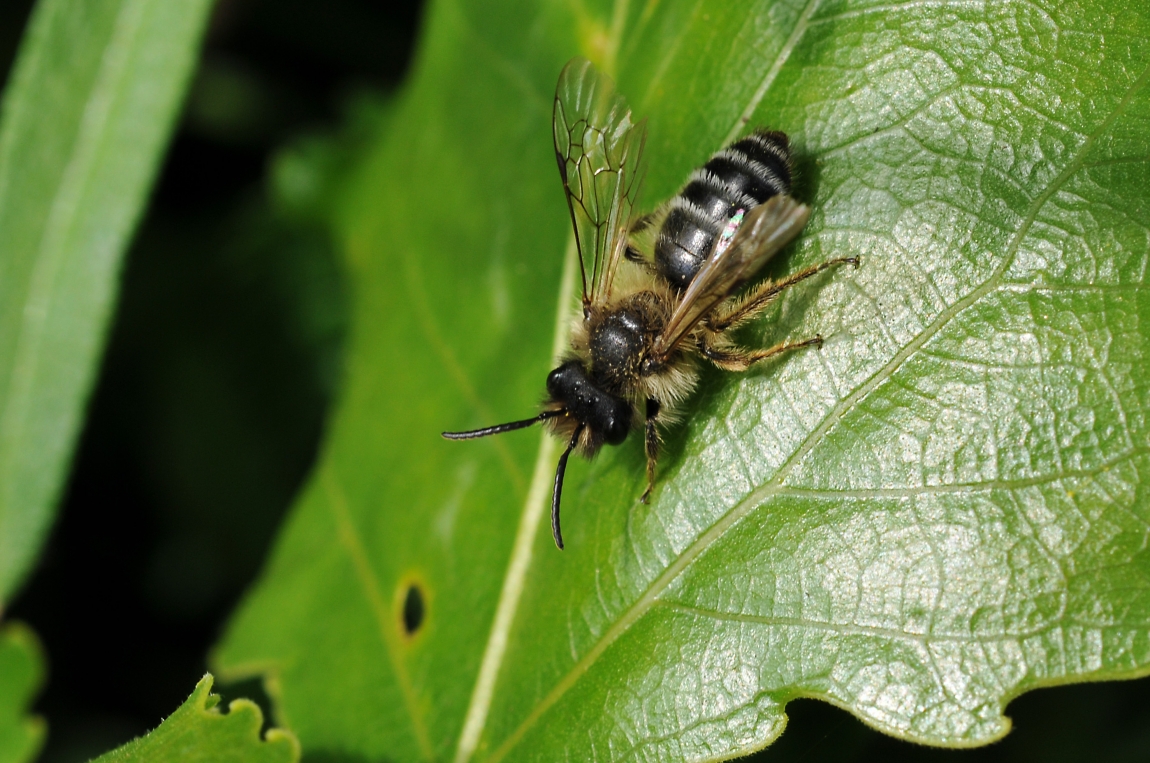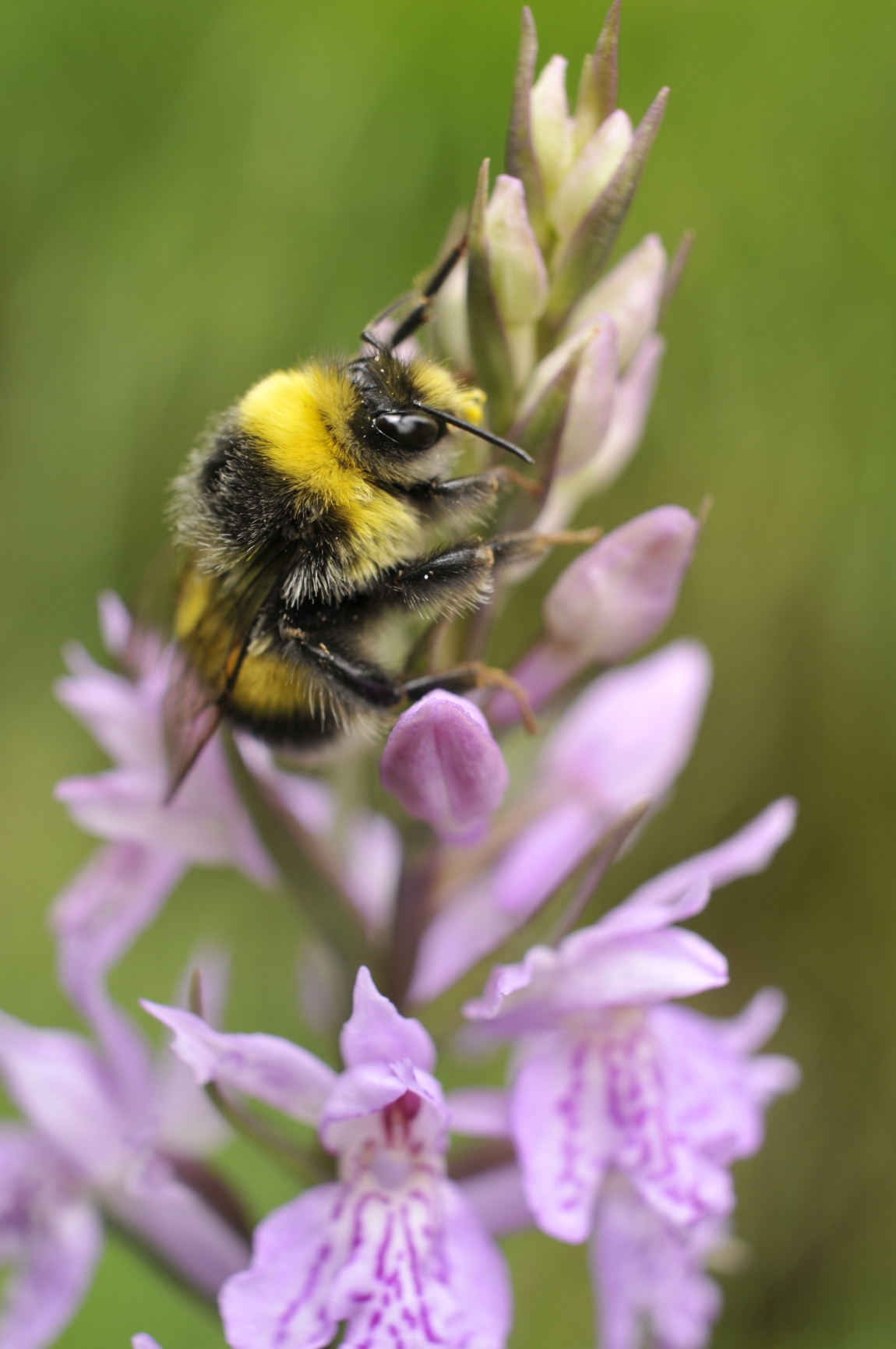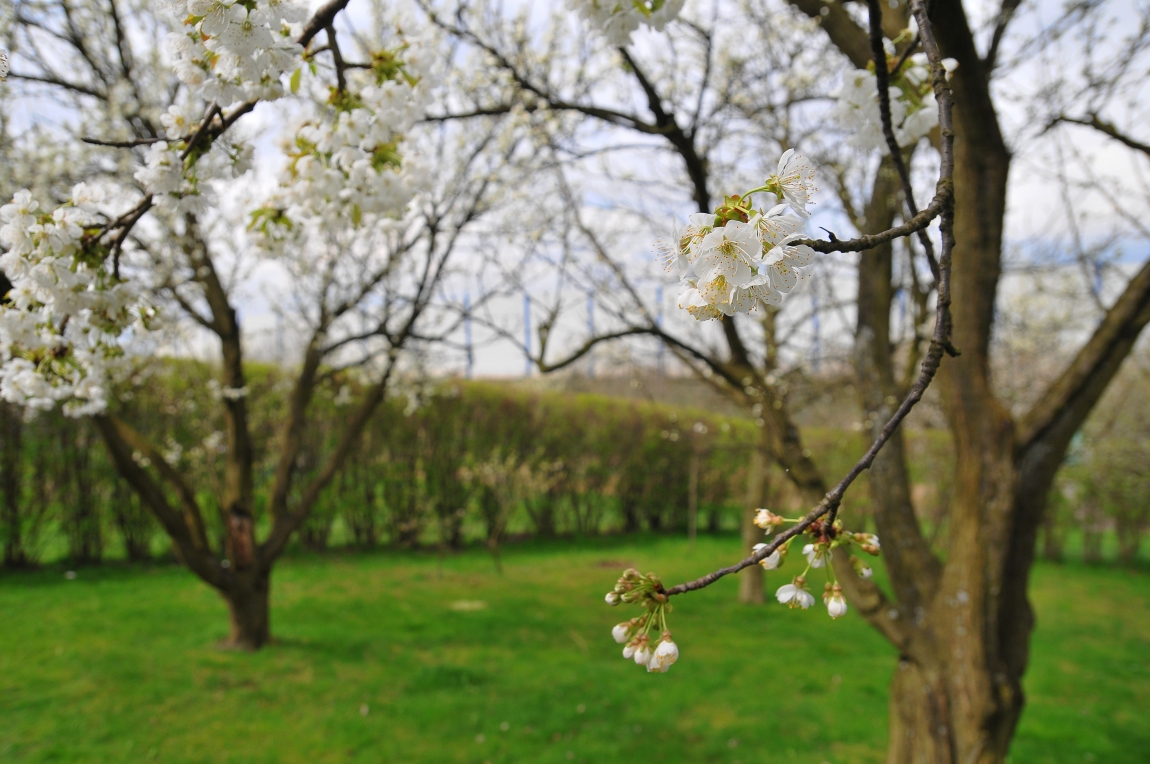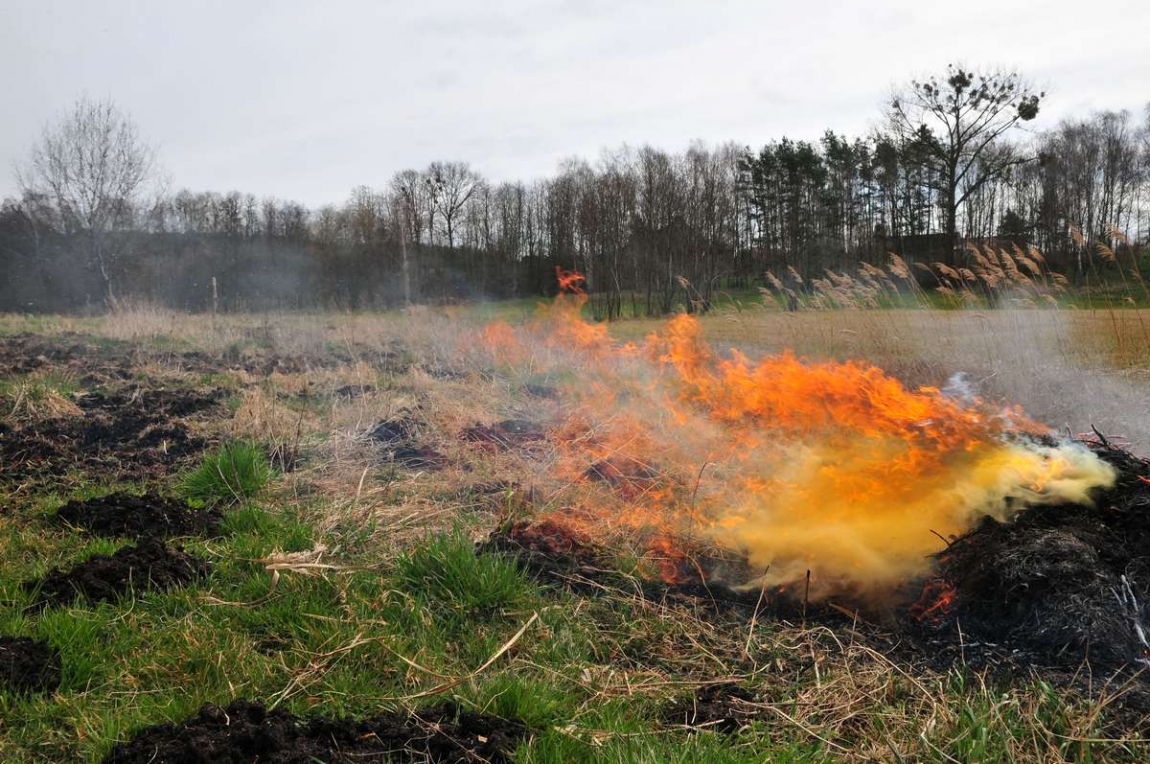Bumblebees are seasonal insects and their population increase from spring to summer. Most of the species creates their nests in the ground or on its surface by using all kinds of dens (balks, ditches, embankments). They also use hollows of trees, cracks in walls, attics or air ducts. In winter, there are only young fertilized females (in hibernation), which create new families in spring. Mothers come out of hibernation in the start of April (when the temperature of the ground they were sleeping in turns +9oC), seek food and place to establish a new nest [1, 4]. The nest is waded with dry grass, leaves and moss. Inside, mother builds big cell (“cradle”), filled with pollen and 4-6 eggs, and smaller cell (“mug), filled with nectar. Larvae of bumblebees are very sensitive to temperature drops and mother have to keep it warm with its own body (like hen) and hold stable temperature of 30oC [4]. After the birth of workers (around 20 days after laying eggs), empty cocoons (opened from the top) are used to keep nectar. Young workers after only 1-2 days are ready to work in the field. Until the first worker appear, all chores and food gathering are done by mother. After that, she stays in the hive and focuses on laying eggs, feeding and warming larvaes. New eggs are attached to the cocoons in a way that it doesn’t disturb biting out of the workers. That way, the hive is develop upwards and sideways [3]. In the middle of summer, a sexual generation appears, which include males and young females – future mothers. Males of bumblebees, unlike honeybee drones, are food self-sufficient, travel between flowers and pollinate them. After the mating flights, males work normally and die in autumn, while mothers hide and hibernate through winter. However, not all mothers hibernate,part of them die during winter, another part in spring, and that’s why only 20% of them are capable of creating a new bumblebee family. Between summer and autumn, old mother dies and workers can exist till the end of October if weather is warm. The family gradually dies out and cease to exist [1,4].
Bumblebees are very efficient pollinators, pollinating even the so-called difficult plants because they are massive and "force" may be pressed into goblets flowering or have longer mouthparts, which helps them reaching for the nectar even from deep flowers. It allows bumblebee worker visit by up to two times more flowers than the worker honeybee in 1 minute. In addition, their size and dense body hair, allowing them to operate at lower temperatures and work in the field even at a temperature of 6 ° C and with weaker rain, drizzle or fog. However, to fulfill their role of pollinators, bumblebees must nestle close to the plantations because their flight range is not big, around 500 m (exceptionally up to 1000 m) [1]. Bumblebees pollinate very efficiently: alfalfa, birdsfoot, lupine, clover, foxglove, cornflower, sage, dahlias, snapdragons, sunflowers, hollyhocks, crocuses, willows, lindens, wild rose, raspberry, jasmine and many others.
These insects can be grown under controlled conditions. Most breeding bumblebees are used in greenhouses to pollinate tomatoes, as opposed to the honeybee,because they are suitable for limited spaces, and are much gentle.
To effectively help bumblebees, it is essential to protect their habitats and also contribute to enriching the environment in places for nesting by e.g.construction and installation of small hivesfor bumblebees. The preparation of such hives is very simple, cheap and does not require specialized skills or equipment. Just an ordinary flower pot with a diameter of approx. 20 cm tube with length of 30 cm and a minimum diameter of 1.8 cm, mesh fence, slate or tile and nesting material (hay, dry moss, wadding, etc.). Use mesh fencing to form a boat which should be filled with plenty of bedding material (without compacting). Do the holes in tube by using a needle. A mesh boat place in a pot and insert into the tube so that the end form as the smallest angle with the base, enabling the bumble bees to easily enter and exit from the shelter. Then dig a hole with a depth of 1/3 of the pot and add to it a prepared socket (pot) upside down. It will be partly buried in the ground, which will create cool and moist conditions that bumblebees need. The tip of the tube should be left above the surface. At the top of the pot you should put a slate or a tile, to provide protection against the rain [5].


